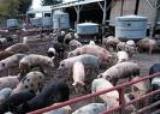South Africa has the potential to convert animal and human waste into as much as 200 MW of power to help ease electricity problems, yet the country’s efforts are hindered by high equipment costs.
While a seemingly cheaper method of generating electricity by burning animal and human waste to create biogas and then electricity is available, experts say hurdles remain. "There is quite a bit of interest from small farmers but for them it’s not particularly viable at the moment because of the costs," Rob Cloete, director of South African firm Biogas Power told Reuters. He said costs of converting waste to power in South Africa were still excessive and far out of reach for the majority of people, particularly in rural areas where income is low despite an abundance of waste from farming.
Cloete said a small biodigester to convert biogas to electricity could cost up to R20,000, far out of reach of the majority of people in rural communities.
Several waste-to-power projects have been implemented in South Africa amid hopes animal waste could supplement grid power, but few of these have produced the results needed to spearhead the push for more investment in similar projects.
A piggery in the northern Limpopo area has produced about 10 MW since August by converting biogas to electricity introduced by Cape Advanced Engineering (CAE) Energy. Program manager Hein Reyneke told Alternative Energy Africa that the CAE project at Humphries Piggery is currently operating with a working digester generating biogas and an engine generating energy and the project is also nearing completion as far as CDM registration is concerned. He said, “Although the project is at a small scale and act as a demonstrator plant it is a complete working system, CAE plans to upgrade the power produced as soon as REFIT is released and we have the permission to export to the grid – currently we are only supplying the farm with electricity.” He continued, “Imbedded into the grid means that the power generation equipment is not stand alone (island mode) but actually synchronized with the grid and part of the national grid, essentially acting as a small power station on the farm.”
Alternative Energy Africa says: You have to crawl before you walk. Biogas projects may be taking a small step, but enough small steps eventually equal to a larger leap.

